Showing Spotlights 913 - 920 of 2785 in category All (newest first):
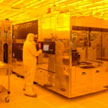 The entry of nanotechnology into manufacturing has been compared to the advent of earlier technologies that have profoundly affected modern societies, such as plastics, semiconductors, and even electricity. Applications of nanotechnology promise transformative improvements in materials performance and longevity for electronics, medicine, energy, construction, machine tools, agriculture, transportation, clothing, and other areas. However, the path to greater benefits from nanomanufactured goods and services is not yet clear. This review takes silicon integrated circuit manufacturing as a baseline in order to consider the factors involved in matching processes with products, examining the characteristics and potential of top-down and bottom-up processes, and their combination.
The entry of nanotechnology into manufacturing has been compared to the advent of earlier technologies that have profoundly affected modern societies, such as plastics, semiconductors, and even electricity. Applications of nanotechnology promise transformative improvements in materials performance and longevity for electronics, medicine, energy, construction, machine tools, agriculture, transportation, clothing, and other areas. However, the path to greater benefits from nanomanufactured goods and services is not yet clear. This review takes silicon integrated circuit manufacturing as a baseline in order to consider the factors involved in matching processes with products, examining the characteristics and potential of top-down and bottom-up processes, and their combination.
Aug 11th, 2016
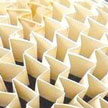 Poisson's ratio describes the fundamental elasticity of any solid. Poisson's ratio has been a basic principle of engineering for more than 200 years as it allows engineers to identify how much a material can be compressed and stretched and how much pressure it will withstand, before it collapses. Materials with a negative Poisson's ratio are relatively rare and it has recently become popular in referring to them as metamaterials - a group of materials that attain interesting or extreme properties via structure rather than composition.
Poisson's ratio describes the fundamental elasticity of any solid. Poisson's ratio has been a basic principle of engineering for more than 200 years as it allows engineers to identify how much a material can be compressed and stretched and how much pressure it will withstand, before it collapses. Materials with a negative Poisson's ratio are relatively rare and it has recently become popular in referring to them as metamaterials - a group of materials that attain interesting or extreme properties via structure rather than composition.
Aug 3rd, 2016
 Oral cancer represents one of the most dreadful killer diseases globally. Researchers have developed nano-sized layer by layer (LbL) assembled polyelectrolytes onto calcium carbonate particles to deliver small molecule tyrosine kinase inhibitors to human oral cancer cells. Calcium carbonate is a naturally occurring inorganic mineral with a porous structure generates a large surface area. It is biocompatible, biodegradable, acts as a sacrificial core template, and offers the opportunity to capture effectively a myriad molecules of interest like drugs, proteins, enzymes, etc. The researchers encapsulated sorafenib - a tyrosine kinase inhibitor - in CaCO3 nanoparticles, which was layered alternatively with biodegradable polyelectrolytes to form a multilayer shell.
Oral cancer represents one of the most dreadful killer diseases globally. Researchers have developed nano-sized layer by layer (LbL) assembled polyelectrolytes onto calcium carbonate particles to deliver small molecule tyrosine kinase inhibitors to human oral cancer cells. Calcium carbonate is a naturally occurring inorganic mineral with a porous structure generates a large surface area. It is biocompatible, biodegradable, acts as a sacrificial core template, and offers the opportunity to capture effectively a myriad molecules of interest like drugs, proteins, enzymes, etc. The researchers encapsulated sorafenib - a tyrosine kinase inhibitor - in CaCO3 nanoparticles, which was layered alternatively with biodegradable polyelectrolytes to form a multilayer shell.
Jul 27th, 2016
 Researchers have developed a highly manufacturable integration strategy for making 3D flexible sensor arrays and connecting them to control electronics based on the widely popular phrase, 'Two sides of the same coin'. Sensor arrays and control elements for flexible electronics devices are usually placed on the same plane, unnecessary requiring additional area, and causing problems of heat dissipation. These challenges motivated researchers to come up with an area-efficient solution for the problem of connecting sensors and electronics together in such a way that electronics can be kept away from the sensed surface. This is the first time ever the concept of double sided flexible 3D electronics has been introduced in the flexible and wearable electronics industry.
Researchers have developed a highly manufacturable integration strategy for making 3D flexible sensor arrays and connecting them to control electronics based on the widely popular phrase, 'Two sides of the same coin'. Sensor arrays and control elements for flexible electronics devices are usually placed on the same plane, unnecessary requiring additional area, and causing problems of heat dissipation. These challenges motivated researchers to come up with an area-efficient solution for the problem of connecting sensors and electronics together in such a way that electronics can be kept away from the sensed surface. This is the first time ever the concept of double sided flexible 3D electronics has been introduced in the flexible and wearable electronics industry.
Jul 26th, 2016
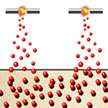 A major challenge in nanotechnology is that of determining how to introduce green and sustainable principles when assembling individual nanoscale elements to create working devices. For instance, textile nanofinishing is restricted by the many constraints of traditional pad-dry-cure processes, such as use of costly chemical precursors to produce nanoparticles, high liquid and energy consumption, production of harmful liquid wastes, and multistep batch operations. By integrating low-cost, scalable, and environmentally benign aerosol processes, these constraints can be circumvented while leading to a new class of multifunctional fabrics.
A major challenge in nanotechnology is that of determining how to introduce green and sustainable principles when assembling individual nanoscale elements to create working devices. For instance, textile nanofinishing is restricted by the many constraints of traditional pad-dry-cure processes, such as use of costly chemical precursors to produce nanoparticles, high liquid and energy consumption, production of harmful liquid wastes, and multistep batch operations. By integrating low-cost, scalable, and environmentally benign aerosol processes, these constraints can be circumvented while leading to a new class of multifunctional fabrics.
Jul 25th, 2016
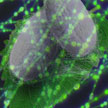 The serious threat of particulate matter (PM) air pollution to human health spurs development of advanced filter technologies. Particular efforts have been made in designing air filters with both high filtration efficiency and low airflow resistance by utilizing carbon nanotubes and electrospun polymer and inorganic nanofibers. In new work, scientists explored the performance of electrospun silk nanofiber membranes as air filters, which showed both of lightweight and high efficient features.
The serious threat of particulate matter (PM) air pollution to human health spurs development of advanced filter technologies. Particular efforts have been made in designing air filters with both high filtration efficiency and low airflow resistance by utilizing carbon nanotubes and electrospun polymer and inorganic nanofibers. In new work, scientists explored the performance of electrospun silk nanofiber membranes as air filters, which showed both of lightweight and high efficient features.
Jul 13th, 2016
 Newly developed nanocomposites possess efficient photothermic properties for highly targeted interfacial phase transition reactions that are synergistically favorable for seawater catalysis and desalination. The nanocomposites are seawater and photostable for practical solar conversion of seawater to simultaneously produce clean energy and water. This work defines the forefront of plasmonic photothermic technology, which is vastly untapped and has broad implications in other fields.
Newly developed nanocomposites possess efficient photothermic properties for highly targeted interfacial phase transition reactions that are synergistically favorable for seawater catalysis and desalination. The nanocomposites are seawater and photostable for practical solar conversion of seawater to simultaneously produce clean energy and water. This work defines the forefront of plasmonic photothermic technology, which is vastly untapped and has broad implications in other fields.
Jul 12th, 2016
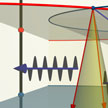 A theory analysis of energy / momentum conservation laws in a spatially confined coupled system of nearly free electrons and phonons hints that the absorption of electromagnetic waves by a metallic nano-object hosting longitudinal vibration modes may allow channeling the absorbed energy either into heat or into terahertz radiation, depending on the nano-objects' shape and size. This offers an explanation for the size selectivity of small nanoparticles in radio frequency hyperthermia, and suggests design for novel terahertz radiation sources.
A theory analysis of energy / momentum conservation laws in a spatially confined coupled system of nearly free electrons and phonons hints that the absorption of electromagnetic waves by a metallic nano-object hosting longitudinal vibration modes may allow channeling the absorbed energy either into heat or into terahertz radiation, depending on the nano-objects' shape and size. This offers an explanation for the size selectivity of small nanoparticles in radio frequency hyperthermia, and suggests design for novel terahertz radiation sources.
Jul 11th, 2016
 The entry of nanotechnology into manufacturing has been compared to the advent of earlier technologies that have profoundly affected modern societies, such as plastics, semiconductors, and even electricity. Applications of nanotechnology promise transformative improvements in materials performance and longevity for electronics, medicine, energy, construction, machine tools, agriculture, transportation, clothing, and other areas. However, the path to greater benefits from nanomanufactured goods and services is not yet clear. This review takes silicon integrated circuit manufacturing as a baseline in order to consider the factors involved in matching processes with products, examining the characteristics and potential of top-down and bottom-up processes, and their combination.
The entry of nanotechnology into manufacturing has been compared to the advent of earlier technologies that have profoundly affected modern societies, such as plastics, semiconductors, and even electricity. Applications of nanotechnology promise transformative improvements in materials performance and longevity for electronics, medicine, energy, construction, machine tools, agriculture, transportation, clothing, and other areas. However, the path to greater benefits from nanomanufactured goods and services is not yet clear. This review takes silicon integrated circuit manufacturing as a baseline in order to consider the factors involved in matching processes with products, examining the characteristics and potential of top-down and bottom-up processes, and their combination.
 Subscribe to our Nanotechnology Spotlight feed
Subscribe to our Nanotechnology Spotlight feed





